10 Frequently Asked Questions about Saddle Stitching
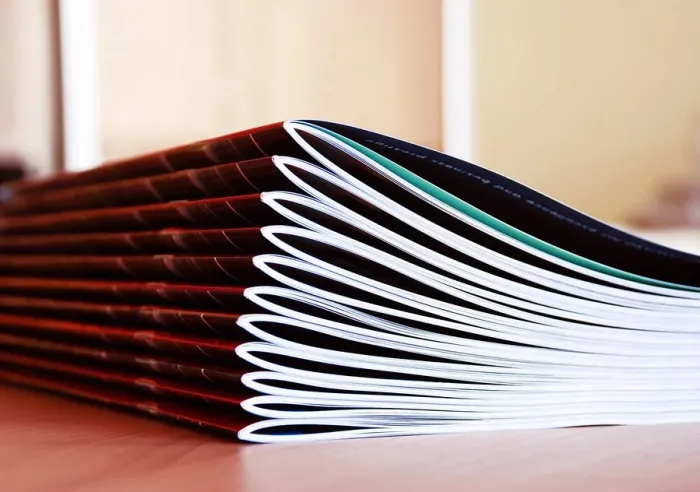
estimated reading time: 7 minutes
1. How did Saddle Stitching get its name?
To construct a saddle-stitched book, printed sheets are
partially folded and then draped one at a time over a conveyor apparatus that
is shaped like an inverted "V". The crease of the partially-folded sheets
straddles the apex of the inverted "V". Once all the interior pages are aligned
in place, the partially-folded cover sheet gets placed over the assembled pages
and the conveyor moves to the stapling station. Staples are then driven through
the fold line of the cover and all pages. The staples are cinched tight after
penetrating the innermost sheet and the stapled fold line creates the book's
spine. The cover and page assembly is then folded tighter together and the open
edges are trimmed.
So…the inverted "V" shape of the conveyor mechanism functions
as a Saddle on which the folded sheets sit astride as they are being collated
and stapled. Also, the joining of the sheets with wire staples is known as Stitching
in the printing business. Hence, this popular bookbinding method is referred to
as Saddle Stitching.
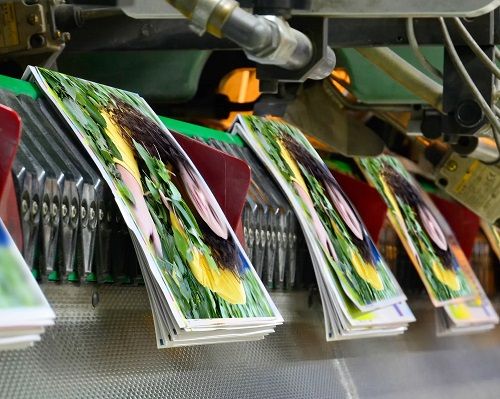
2. What are the advantages of Saddle Stitch binding?
Saddle Stitching is the preferred binding method for books with lower page counts. Despite its relative simplicity, books produced with the saddle stitch method have a very professional and tidy appearance. Saddle Stitching works well for a wide range of book dimensions, from pocket size to giant size.
Also, saddle stitching adds minimal weight or bulk to a printed book so it can help
reduce mailing and shipping costs. In addition, the saddle-stitch binding
method is suitable for production runs of any length - short, medium, or long.
3. Is Saddle Stitching an affordable binding style?
Saddle Stitching is an extremely affordable binding option.
In fact, it is the most economical bookbinding method available.
4. What is the difference between a "Self-Cover" book and a "Plus Cover" book?
Saddle Stitched books can either be made as a "Self-Cover" book or as a "Plus Cover" book. A Self-Cover book uses the same type and
weight of paper for the outside cover as it does for the interior pages.
The entire book, cover and pages, is printed on the exact same type of paper. This
offers some cost savings because the entire book can be printed and assembled
all at once instead of needing two separate production runs for the cover and
pages.
Conversely, a Plus Cover book is made with a different type of paper for the cover than what is used for the interior pages. For example, a
Plus Cover book commonly uses a heavier paper for the cover and a lighter paper
for the pages. It is also common for a book's cover to be a coated stock while
the inside pages are uncoated. In both of these examples, the paper stock for
the cover is different from the paper stock for the pages. Thus, these books are referred to as Plus Cover books.
By the way, even though "Self-Cover" books are more
economical, most orders placed for saddle-stitched book projects are "Plus Cover."
5. What are the maximum and minimum page counts for Saddle Stitching?
The maximum page count for saddle-stitched books tends to
vary from printer to printer. Some may push the limit of what the binding
staples can hold and manufacture saddle stitched books with well over 100 pages. But, saddle-stitched
books with too high of a page count have the potential to "spring open" instead of lying flat. So our recommendation is a maximum of around 60 pages. Since
each folded sheet within a saddle-stitched book creates 4 pages of the book, 60
pages equates to 15 folded sheets.
Regarding the minimum page count for a saddle-stitched book,
the minimum number of folded sheets that can be joined with staples is 2. Because
each folded sheet creates 4 pages of the book, this translates to an 8-page
self-cover book (where the entire book is made from the exact type and
thickness of paper) or a 4-page plus cover book (where the cover is a different
paper type and/or thickness than the pages).
6. Can the Saddle Stitch binding method be used to create landscape books?
A Landscape orientation refers to books that are wider than
they are tall. For example, a book measuring 9" wide x 6" high or 11" wide x
8.5" high is an example of a landscape book.
Generally speaking, the saddle-stitch binding method can be
used to create landscape books. That said, it largely depends on how well the
book's dimensions and order quantity align with the printing presses at the
company you are considering to print the job. This is because Short run projects are
better suited for Digital printing presses and Medium to Long run projects are
better suited for Offset printing presses. This is important because Digital
presses generally have a smaller maximum sheet size than Offset presses.
So, let's say the finished dimensions of your landscape book
are to be 11" wide by 8.5" high. Because saddle-stitched book are created from
folded sheets, this means the sheet size needed to print the cover and pages of
this book would need to be 22" wide (or even a little more because presses
rarely print edge to edge.)
Now let's say you only need 100 or 200 books in this size,
which means it would need to be produced on a Digital press to be cost
effective. However, if your printer only has a standard 13" x 19" Digital
press, you'll have to find a printing company that has a larger Digital press because obviously 22" exceeds 19" .
Or, consider increasing the order quantity so the books can be produced economically on an
Offset press that can print on a larger sheet size.
By the way, if the order quantity was 500, 1000, or more to
start with, this same landscape book project would be a good fit for an Offset
press. So the sheet size would not have been a concern.
The best advice is to discuss your saddle-stitched landscape
book with your printer upfront, especially if you are looking for a short
production run and your printer only has smaller Digital presses.
7. Can Saddle Stitched books have text printed on the spine?
Because saddle-stitched books are created from folded
sheets, the spine that results is basically just a thin folded edge. As such, the spine has no available space on
which to print.
8. What types of projects are typically Saddle Stitched?
As mentioned in the answer to question #2, the saddle stitch
binding method is better suited for books with relatively low page counts. Common
examples of projects that are a good fit for saddle-stitching include comic books, coloring and activity
books, workbooks, event programs, product and instruction guides, plus thinner magazines,
catalogs and directories. In addition to books, other documents that are
frequently bound with the saddle stitch method include newsletters, bulletins, promotional
mailers, brochures, and multi-page wall calendars.
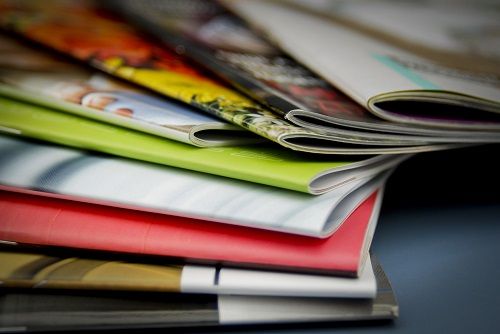
9. Is Saddle Stitch binding suitable for crossover images?
Crossover images are images that span across two opposing
pages of an open book. As the name implies, these images "cross over"
the spine area of an open book as they flow from the left hand page to the
right hand page.
Because
of the way saddle stitched books are imposed and bound, it can be a challenge
to have the left and right sides of a crossover image align perfectly with each
other as the image flows across opposing pages. However, because the page
spread at the very center of the book prints on a single sheet of paper, this center
spread will display a crossover image without any disruption.
10. Does Saddle Stitch binding go by any other names?
Saddle Stitch and Saddle-Stitching are the most popular
references used for this binding style. Occasionally, you may also hear this method
referred to as Staple Binding, Saddle Binding, or Stitch Binding.
Color Vision is ready to help with your next custom printed book project…
Color Vision specializes in printing high-quality books and
booklets at affordable prices. So whether you're looking for books printed in
full color CMYK, PMS colors, black ink, or grayscale, we offer a one-stop
solution for your printing, finishing, and binding needs. So give us a call
at 800-543-6299 to discuss your project.
If you already know your specs and prefer to
receive a quotation by email, simply fill out our Quote Request form and we
will get busy working on it. As always, we look forward to assisting with your
next book project!
Related Articles
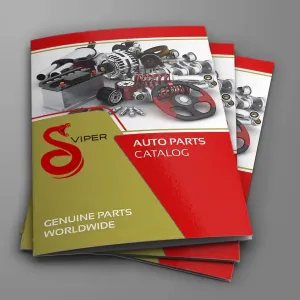
Booklet Catalogs: Why is this Catalog Format so Popular?
Read This Article
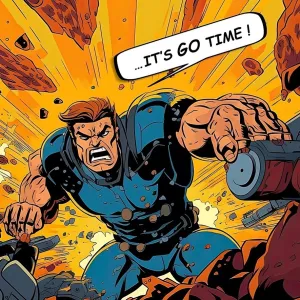
Creating a Comic Book? Here’s some Advice from a Printer
Read This Article

Perfect Binding vs PUR Binding: What is the Difference?
Read This Article

Perfect Bound Book Printing: Tips for getting the Best Value
Read This Article